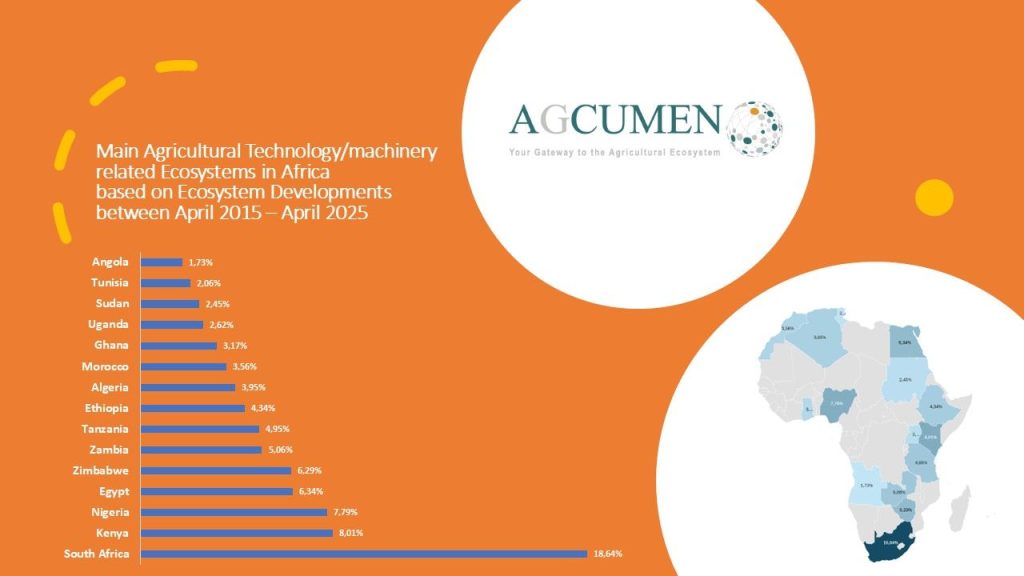Agricultural Machinery & Technology Ecosystems in Africa
Several African countries stand out for having notable agricultural machinery and technology ecosystems, reflecting both the scale of their agricultural sectors and growing adoption of mechanisation and innovation. These countries are not only increasing mechanization but also integrating digital technologies, service-based models, and advanced equipment, contributing to more efficient and productive agriculture across the continent.
The core ecosystem of organisations (manufacturers of machinery, and their main intermediaries) currently includes about 2000 organizations on the African continent.
The biggest ecosystems, in terms of involved companies, are South Africa, Kenya, Nigeria, and e.g. Egypt (see also below chart). South Africa is often used as a stepping stone into the African continent, and predominantly into adjacent markets.
The top 15 countries represent almost 81% of organizations connected to the African ecosystem (based on our flow, and knowledge graph data of the past 10 years) while the remaining represent 19%.

Farm Table’s Overview of Agricultural Machinery in Africa
| Country | Key Features of Machinery/Tech Ecosystem |
|---|---|
| South Africa | Market leader; precision, automation, distribution hubs, policy support |
| Nigeria | Fast mechanization, tech startups (Hello Tractor), digital access models |
| Kenya | Digital innovation, medium-scale farm growth, local machinery production |
| Egypt | High tractor use, irrigation technology, intensive crop production |
| Ethiopia | Adoption of machinery, growing medium/large-scale farming |
| Tanzania | Mechanization on rise, digital platforms, service and leasing models |
| Ghana | State & international machinery initiatives, tractor hire centers |
| Zambia | Innovative leasing models, medium-scale farm expansion |
| Zimbabwe | Mechanization strategies, precision agriculture |
| Algeria, Morocco, Benin, Cameroon | Broad use or production of machinery |
These countries collectively illustrate Africa’s progress toward more mechanised, tech-enabled, and efficient agriculture while facing diverse challenges related to access, affordability, and of course infrastructure.